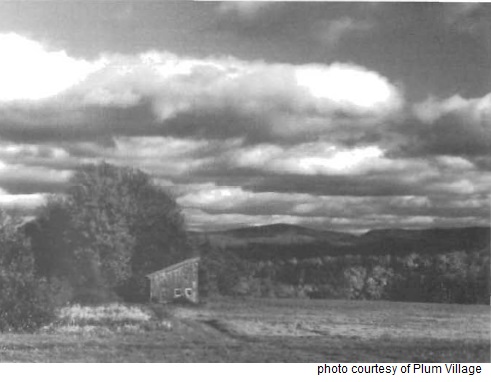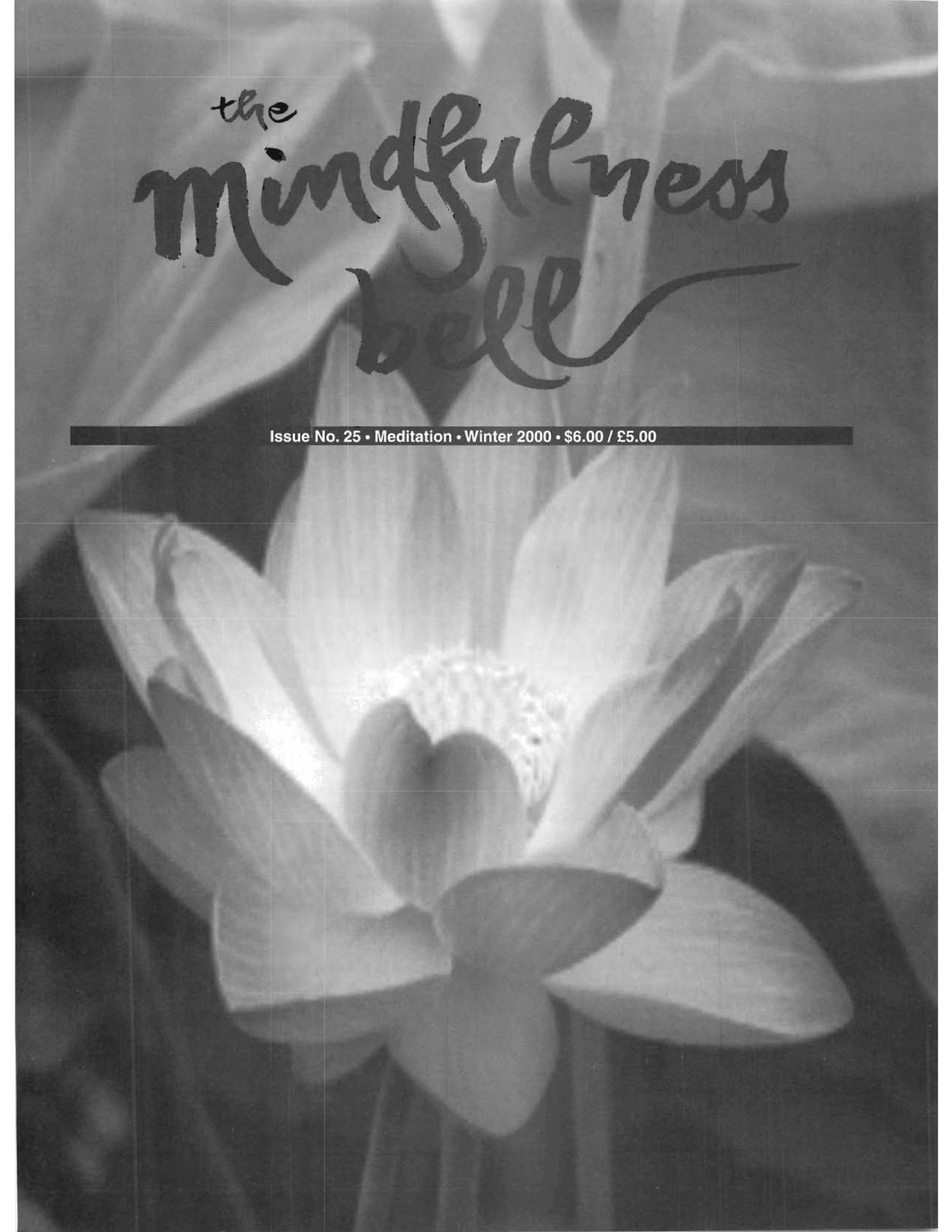By Thich Nhat Hanh in January 2000
The first act of the meditator is to go back to his or her body as the object of mindfulness. Breath is the vehicle with which we go back to our body. The breath belongs to the body. It is a link between body and mind. As soon as you go back to your in-breath and out-breath and breathe mindfully, your mind comes home to your body and you are truly present in the here and now,
By Thich Nhat Hanh in January 2000
The first act of the meditator is to go back to his or her body as the object of mindfulness. Breath is the vehicle with which we go back to our body. The breath belongs to the body. It is a link between body and mind. As soon as you go back to your in-breath and out-breath and breathe mindfully, your mind comes home to your body and you are truly present in the here and now, truly alive.
Then, make another step. During your in-breath, be aware of not only your in-breath, but also of your body. That is the meaning of the exercise given by the Buddha, "Breathing in, I am aware of my body." During my in-breath, I use the energy of mindfulness to embrace my body, to recognize its presence. The next exercise the Buddha proposed is that you calm your body. "Breathing in, I calm my body. Breathing out, I smile to my body." These exercises can be done sitting or lying down. Go back to your body, recognize it, embrace it, and calm it. Your body needs peace. There may be tension, conflict, and war in your body, and you have to be there for your body. "Darling, I am here for you." And "darling" here is my own body.

First, you embrace the body as a whole. You smile to the body. Next you begin to focus your mindfulness on one part of your body, like your eyes. Then you focus on your nose, your tongue, your brain, your lungs, and so on until you come to the soles of your feet. Scan your body with the beam of mindfulness. "Breathing in, I am aware of my eyes. Breathing out, I smile to my eyes." The meditator identifies each part of her body, recognizes it, embraces it, and smiles to it. When you arrive at a spot where there is a little bit of pain, you stay longer. You spend more time with that part of your body, embracing it and smiling to it.
Allowing your body to rest is very important. Your body has the capacity of self-healing if only you allow it to restore itself. Many of us have lost the capacity to rest. We are victims of stress and tension. We learned that habit, and we are no longer capable of resting. That is why it is difficult for our body to restore itself. When an animal in the forest gets hurt, it goes to a quiet place and lies down. It does not think of eating, drinking, or anything until the wound is healed. We used to do that, but we have lost that kind of habit. Every time something is wrong in our body, we worry so much, we get a lot of help, but we don't allow our body a chance to rest and recover. So this is a very important practice recommended by the Buddha: be there for your body, allow it to be, and allow peace and harmony to be restored in your body by mindful living, mindful resting, mindful eating and consuming.
The second object of your meditation is your feelings. In each of us, there is a river where every drop of water is a feeling. If you are truly present, you'll be able to identify your feelings—pleasant, unpleasant, neutral, or mixed—and look deeply into the nature of each feeling. That is meditation. Just recognizing. Not to be attached to a feeling, not to try to push it away. This is very important. Simply recognize each feeling as it arises, while it is there, and as it is dying down. You don't fight your feeling, you just embrace it like the sunshine embracing the vegetation.
In the morning when the tulips are still not open, the sunlight embraces the flower. Each particle of the light continues to penetrate the flower, and after one or two hours, the tulip will open. In the same way, we don't intervene or fight our feelings. We generate the energy of mindfulness in order to recognize and embrace the feeling.
We should not be afraid of our feelings and emotions. Sometimes an emotion can be very powerful, like a storm. It makes us suffer a lot. But we should remember that an emotion is only an emotion. Not more than an emotion. Sometimes we think that we are only our emotion. That is not correct.
Some of us, especially young people, suffer so much when they are overwhelmed by a strong emotion. Sometimes young people tend to believe that the only way to stop suffering is to kill themselves. When we observe a tree in a storm, if we focus on the top of the tree, we feel a lack of safety. The tree seems fragile, unable to withstand the storm. But if we focus on the trunk of the tree, we see its firmness. We see that the tree is deeply rooted in the soil and that it will withstand the storm. When we are overwhelmed by strong emotion, we should not focus on the level of the brain or the heart. We have to bring our attention down to the level of the navel. This is our trunk. We know that to stay in the storm is dangerous, so we go down and embrace the trunk. We practice mindful breathing, and focus all our attention on the rise and fall of the abdomen during the storm of strong emotion. Breathe in and out deeply, and nourish your awareness that emotion is something that comes, stays a while, and goes away. And after ten, fifteen, or twenty minutes, that strong emotion will go away.
An emotion is only an emotion, and you are much more than your emotion. Why do you have to die because of one emotion? We have to tell the young people that, and we have to train them to practice breathing with us. When a young person is shaken by a strong emotion, we must invite him or her to sit down with us. We can hold his hand. We can invite her to breathe in and out with us, focusing our attention on the rise and fall of our abdomens. "Darling, please breathe in deeply and breathe out deeply, and focus your attention on the rise and fall of your abdomen." And you are channeling your energy to support the young person. You help that person to go across the storm. After a few times practicing with your support, she will be able to do it by herself. We may save a life if we know how to practice and how to help young people practice like that.
We should not wait until the emotion arises to begin the practice, because we will forget. We have to begin right now. The Buddha gave us these exercises: "Breathing in, I am aware of my feeling. Breathing out, I smile to my feeling. Breathing in, I am calming my feeling. Breathing out, I am calming my emotion." If we practice for a few weeks, the practice will become a habit, and when strong emotion arises, we will know how to practice. We will remember to practice.
During practice, we should look deeply into the nature of our emotion, and identify the nutriments that have brought it into us. It is our way of consuming and being in touch with the world that has brought that strong emotion into us, whether it is fear or despair or anger. To meditate is to look deeply into what is there and understand the source, the deep causes of it, the true nature of it. We all have good seeds and bad seeds within us. If we allow the bad seeds to be watered every day, then we have the desire, the anger, the tendency to harm ourselves and other people around us. If we look deeply, we can identify the kind of nutriments we ingest in our daily life. Nothing can survive without food. There is so much violence in the bodies and consciousness of young people today, because they consumed so much violence in their daily life. They don't know how to embrace, to look deeply and transform. They don't know how to cut off that source of nutriment. They continue to consume the poisons of craving, hatred, despair, and violence in their daily life. To meditate is to go back to the river of feelings, identify every feeling, calm them, and look deeply into them, in order to understand their true nature in terms of nutriments.
In the Buddhist teaching, we hear of the practice of the six paramitas, crossing over to the other shore. This is the shore of suffering, the shore of ill-being, despair, fear, and anger. I don't want to stay on this shore. I want to cross over to the other shore, the shore of well-being, forgiveness, peace, and compassion. Six kinds of boats can carry me from this shore to the other shore, the six paramitas. And the sixth one, the last one, is about understanding prajna. It is prajna paramita, the kind of understanding that can bring you to the other shore. When you practice to identify what is there and look deeply into the nature of what is there, you are practicing prajna paramita, and the insight you get will bring you to the other shore, the shore of liberation and well-being.


